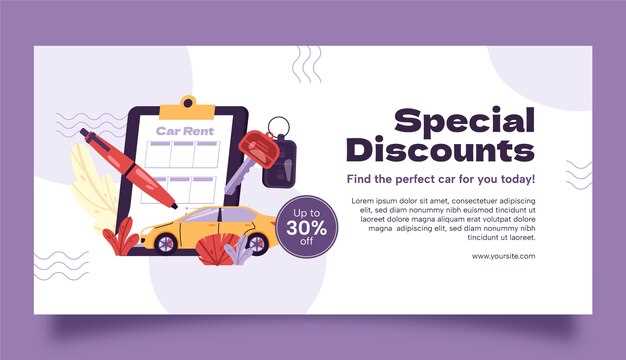
In the highly competitive world of cosmetic auto services, an effective pricing strategy can be the key differentiator for success. Using the right model not only helps in attracting customers but also ensures long-term profitability. Pricing is not merely about setting an arbitrary number; it is a reflection of the value offered to clients, the quality of services provided, and the overall customer experience.
When considering pricing mechanisms, it is crucial to understand various strategies such as cost-plus pricing, competition-based pricing, and value-based pricing. Each of these models brings its own advantages and challenges. For example, cost-plus pricing may simplify calculations, but it risks overlooking the real value perceived by customers. On the other hand, value-based pricing requires a deep understanding of customer needs and market demand, placing more importance on the satisfaction and loyalty of the client.
In this article, we will explore effective pricing strategies tailored specifically for cosmetic auto services, examining how to align pricing structures with perceived value to enhance customer satisfaction and drive business growth. By integrating thoughtful pricing strategies, businesses can create an attractive offer that not only resonates with customers but also solidifies their competitive edge in the ever-evolving automotive service landscape.
Understanding Variable and Fixed Cost Impacts on Pricing Models

When developing an effective pricing model for cosmetic auto services, it is crucial to understand the impact of both variable and fixed costs. These costs play a significant role in determining the final price of services offered to customers.
Variable costs are expenses that fluctuate based on the level of service provided. In the context of cosmetic auto services, this may include materials such as paint, wax, and cleaning products. As the number and complexity of jobs increase, variable costs can significantly affect profitability. A well-structured pricing model accounts for these variations, enabling businesses to adjust prices based on job complexity and resource utilization.
On the other hand, fixed costs remain constant regardless of the volume of services delivered. These include overhead costs such as rent, salaries, utilities, and equipment maintenance. Understanding how fixed costs impact the overall pricing model is essential for ensuring that the business can cover its expenses while remaining competitive in the market. A pricing strategy that effectively spreads fixed costs over a larger number of services can lead to lower prices for customers and increased sales volume.
Integrating both variable and fixed costs into the pricing model allows businesses to establish rates that are not only competitive but also sustainable. This holistic approach ensures that costs are covered while still providing value to customers. Regularly reviewing and adjusting pricing strategies based on shifts in costs can help maintain profitability over time, making it a key component in the financial success of cosmetic auto services.
Aligning Service Value Perception with Customer Willingness to Pay
In the competitive landscape of cosmetic auto services, understanding how customers perceive value is crucial for developing an effective pricing model. Customers evaluate the worth of services not only based on the direct benefits received but also through the overall experience, including quality, convenience, and customer service.
To successfully align service value perception with customer willingness to pay, businesses must first identify the key value drivers that resonate with their target audience. This may involve market research, customer surveys, and analysis of competitors. By gaining insights into what customers prioritize–whether it’s high-quality materials, professional expertise, or additional amenities–businesses can tailor their offerings to match these expectations.
Next, an appropriate pricing model must be established, reflecting the perceived value. A value-based pricing strategy can be effective, where prices are set primarily based on the perceived or estimated value of the service to the customer rather than solely linked to costs. This approach encourages customers to view services as investments, rather than merely expenses. When customers see a strong correlation between what they pay and the value they receive, their willingness to pay increases significantly.
Furthermore, communicating the value proposition clearly is essential. Marketing materials should highlight unique aspects of the service that differentiate it from competitors, emphasizing how these elements enhance the customer experience. Providing testimonials or case studies can also bolster trust and enhance perceived value.
In addition, offering tiered services can cater to different customer segments, allowing clients to choose a package that aligns with their perceived value and willingness to pay. This flexibility can lead to increased customer satisfaction while maximizing revenue opportunities.
Ultimately, aligning service value perception with customer willingness to pay requires a dynamic approach that evolves as market conditions and customer preferences change. Continuous feedback loops, regular assessment of service quality, and adaptive pricing strategies will pave the way for sustained success in the cosmetic auto services industry.
Implementing Dynamic Pricing Based on Seasonal Demand Trends

Dynamic pricing is a strategy that allows businesses to adjust their service prices in response to changing demand fluctuations. In the cosmetic auto service industry, understanding seasonal demand trends is crucial for maximizing revenue and enhancing value for customers. By analyzing historical data and market trends, businesses can identify peak seasons when demand is high and correspondingly lower demand periods.
During peak seasons, such as spring and summer, when vehicle owners are more likely to invest in cosmetic enhancements, implementing a price increase can reflect the higher value of services provided. This adjustment not only helps in capitalizing on the increased demand but also allows service providers to allocate resources more efficiently. Conversely, during off-peak times, a strategic reduction in pricing can entice customers to utilize services that they might otherwise postpone.
Moreover, the use of technology and software solutions can assist in effectively managing dynamic pricing. By integrating real-time data analysis, businesses can automatically adjust their pricing strategies based on current demand, competitor pricing, and customer behavior patterns. This responsive approach ensures that the service pricing remains competitive while also optimizing profitability.
In essence, implementing dynamic pricing based on seasonal demand trends not only maximizes revenue but also enhances customer satisfaction. By offering fair pricing that reflects the value of the services, businesses can foster loyalty and encourage repeat visits, ultimately leading to long-term growth in the cosmetic auto service market.






